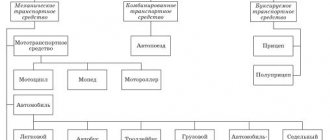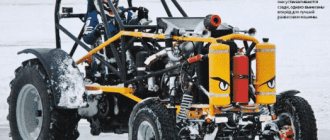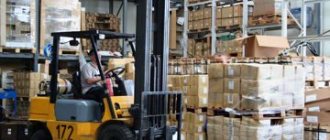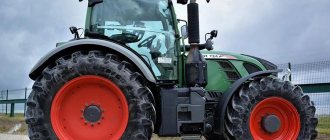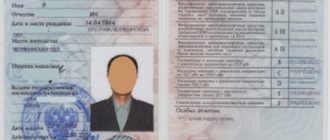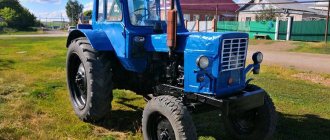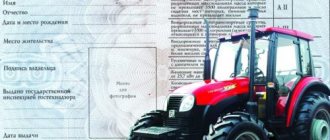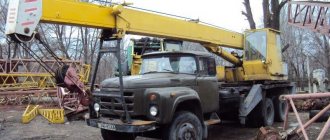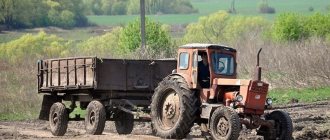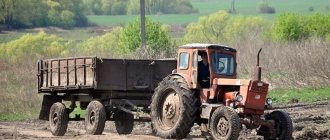Vehicle classification
Classification of vehicles is the distribution of various vehicles into groups, classes and categories. Depending on the type of design, parameters of the power unit, purpose or features that certain vehicles have, the classification provides for several such categories.
A vehicle (VV) is a technical device for transporting people and/or goods. Unlike lifting and handling devices, vehicles are usually used for transportation over relatively long distances.
According to the classifier of types of vehicles for international transport, a trailer is a vehicle without an engine, intended for the transport of passengers or goods, the vertical load of which is transmitted to the supporting surface through the wheels and which is adapted for towing by a car.
The rolling stock of road transport currently represents a wide range of vehicles, varying in technical characteristics and purpose. In order to streamline the classification of vehicles ⭐, a number of criteria have been adopted that serve as their characteristic features. Based on these features, vehicles are divided into groups that have common properties and characteristics.
In order to highlight the area of vehicles subject to this classification, the term “road transport” was defined, highlighting from the entire range of vehicles those that are operated primarily on public roads of all categories. This classification excludes other wheeled trackless vehicles, which due to their mass and size characteristics are not intended for driving on public roads. These are, for example, quarry vehicles, all-terrain vehicles, airfield and mine tractors, etc.
According to the current Traffic Rules, the following overall dimensions are currently accepted for road vehicles:
- in height - no more than 4 m from the road surface
- length - no more than 12 m for a truck, bus, trolleybus and trailer, no more than 15.18 m for an articulated bus or trolleybus
- in width - no more than 2.60 m for vehicles with an isothermal body, no more than 2.63 m for a KrAZ vehicle, MAZ-509A, MAZ-543 timber trucks, no more than 2.55 m for other vehicles
The total length of the road train should be no more than 20 m.
Currently, two types of classification are used - by type and by category of vehicles. Classification by type is the most common in our country, it was used for many years in the USSR, and continues to be used in many regulatory documents related to vehicles (state standards, traffic rules, etc.). In addition, this classification is applied when registering vehicles. The scheme for classifying vehicles by type is shown in the figure.
Rice. Scheme of classification of vehicles by type
The presence of an engine is used as a criterion for the most general division of vehicles. In this case, vehicles are divided into mechanical, equipped with an engine, and towed, not equipped with an engine.
A motor vehicle and one or more towed vehicles can form a combined vehicle, which is called a road train if it consists of a car and one or more trailers coupled to it by means of a coupling device.
Classification of motor vehicles
- for cars
- for motor vehicles
- for tractors
A car is a mechanical vehicle that is driven by an energy source, has at least four wheels located on at least two axles, is designed to move on trackless roads and is used for transporting people and (or) cargo, towing vehicles intended for transporting people and (or) goods, performing special work. This term also applies to vehicles whose engines are powered by direct electric current from an overhead contact network (trolleybuses), as well as to three-wheeled vehicles whose curb weight exceeds 400 kg.
Curb weight means the gross shipping weight of the vehicle plus the weight of coolant, lubricants, windshield washer fluid, fuel (tank filled to at least 90% of rated capacity), spare tires, fire extinguishers, standard spare parts, wheel chocks, standard set of tools.
A motor vehicle is a single-track, two-wheeled motor vehicle.
A tractor is a mechanical vehicle used to implement pressure or traction force through equipment mounted on it.
Classification of towed vehicles
A trailer is a vehicle without an engine, designed for the transport of passengers or goods, in which the entire vertical load is transmitted to the supporting surface through its wheels, and adapted to be towed by a car.
A semi-trailer is a trailer which, by its design, is intended for use with a tractor-trailer and part of the total weight of which is transferred to the tractor-trailer through the fifth-wheel coupling.
A characteristic feature of the automobile division is their main purpose. It can be used to transport passengers or transport goods (special equipment).
A passenger car is a vehicle that, by its design and equipment, is designed to transport passengers and luggage while providing the necessary comfort and safety. In this case, a passenger car with no more than nine seats, including the driver’s seat, is called a passenger car, and more than nine are called a bus.
A truck is used to transport goods. If the chassis of a truck is used to transport special equipment (truck crane, aerial platform, drilling rig, etc.), a certain cargo (tank truck, concrete mixer truck) or is equipped with loading and unloading means, then such a vehicle is classified as special.
To transport goods, tractor-trailers and truck tractors are also used, which perform their function by towing trailers and semi-trailers.
There are a number of intermediate types of vehicles, characterized by a specific feature. So, for example, a single-decker bus with no more than 17 seats, including the driver’s seat, is called a minibus; a car that, by its design and equipment, is designed to transport passengers and cargo is called a cargo-passenger car; A trailer designed to be used on the road while parked as a mobile living space is called a caravan.
The world's first crawler tractor and its inventor
Fyodor Abramovich Blinov is a Russian self-taught inventor of the late 19th century who made a breakthrough in the field of heavy work equipment. Blinov is the inventor of the world's first tracked tractor and the tracked propulsion system itself, without which it would have been impossible to create a tank, the first prototype of which, the Porokhovshchikov All-Terrain Vehicle, was also created by the Russians.
Fyodor Abramovich Blinov was born in 1827 in the village of Nikolskoye, Volsky district, Saratov province, into a family of serfs. Fedor was the first member of the family to receive “freedom,” which allowed him to join the ranks of civilian workers and provide significant financial support to his household. However, the job chosen by Fedor turned out to be not the “cleanest” and easiest: first he went to work as a barge hauler, and then as a fireman and assistant driver on a steamship. Both of these specialties played a huge role in the development of Blinov’s inventive talent.
The work of a barge hauler, in addition to its monotony, was also extremely difficult and exhausting. Much depended on natural conditions: the width of the coastline, the speed of the current, the presence of a tailwind or headwind. In addition, the degree of passability of the coast was also an important condition: it was much more difficult to move along a swampy or dry sandy coast, even without a load, than along a trampled clay or earthen section of the path.
And then Fyodor Blinov began developing a device that was universal and useful for the barge hauler business.
Fedor Abramovich Blinov
For the first time, the ingenious idea of using a caterpillar as a propulsion device for a cart and thus reducing the specific pressure on the ground many times came to Blinov in 1878. Already in 1879, he built a platform on two tracks. This cart was demonstrated in the city of Volsk in front of a huge crowd of people. A description of this event is available in the Saratov provincial newspaper. In 1879, Blinov received a “privilege” (patent) for the “car of a special device with endless rails for transporting goods on highways and country roads” designed by him - a mechanism that is the first working analogue of a modern caterpillar tractor.
The car had 4 support wheels and 4 drive sprockets - the most important components of the machine. The unit was driven by horse traction and at the time of its creation was a caterpillar trailer.
The invention quickly became famous and popular among the masses. Thus, the newspaper “Saratov Listok” reported in January 1881: “Volsk, January 23... Let me share with you our news and interests of recent days. Our news is of the most pleasant content. This is Mr. Blinov’s invention, which undoubtedly promises to have enormous economic significance in the near future. Blinov, the inventor of endless rails, was testing his platform the other day. A platform with self-propelled rails, loaded with 550 pounds (2,000 bricks and more than 30 adult people), drawn by a pair of ordinary horses, recently drove several times through the streets of our city, causing general approval. Honor and well-deserved glory to Mr. Blinov, a self-taught mechanic from the peasants of the Volsky district.”
An original drawing of Fyodor Blinov's steam tractor, attached to his patent application: 1 - guide wheel; 2 — support rollers; 3— drive wheel; 4— caterpillar; 5 — caterpillar links; 6— steam boiler; 7 - pressure gauge; 8 - whistle; 9 - steam engine; 10 - first pair of gears; 11 - second pair of gears; 12 — control lever; 13 — driver’s seat; 14 - control booth.
Just 4 years after the creation of the prototype and its first field test, Blinov established his own machine-building enterprise, which, in addition to his first invention, produces various devices useful not only in agriculture, but also in any other industrial sector.
In 1881, Blinov began developing a “self-propelled” tracked vehicle, which acquired its final form only seven years later. The device was designed like a carriage with a 12 horsepower steam engine installed on it. The car could reach a speed of three miles per hour. It was the “self-propelled gun” that ultimately immortalized Blinov’s name through the centuries: he took part in the Russian industrial exhibition in 1896 - at the Nizhny Novgorod Fair, where the “self-propelled gun” was presented in action.
As often happened in pre-revolutionary times, an enterprising German manufacturer was found who offered Blinov to sell his invention. Blinov refused. According to the testimony of the inventor’s daughter Ustinya Fedorovna, he answered like this: “I am a Russian peasant, and I thought and did for my homeland. But Russian men are not for sale.”
The work of Fyodor Blinov was continued by his student, Yakov Mamin, becoming the first inventor to use tractor diesel engines in his developments.
Blinov’s son, Porfiry Fedorovich, thanks to the help of his father, was able to open the “P.F. Blinov Factory of Oil Engines and Fire Pumps,” where he continued his father’s business. The factory became a city-forming factor for the village of Nikolskoye: according to data from 1900, the number of workers at the factory reached 150 people - a record number of workers for a small institution. The great inventor lived to be 70 years old. He died of paralysis on June 24, 1902, and was buried next to the plant.
After Blinov’s death in 1902, his student Yakov Mamin began improving the tractor, who in 1903 built the first non-compressor engine with compression ignition. Seven years later, on the basis of this engine, he created a transport model and in 1910 installed it for the first time on his “Russian tractor”. As a twelve-year-old boy, Blinov’s student Yashka Mamin sawed out hinges for tracked links, then participated in processing the “fingers” that fastened one link to another, and even later helped in the foundry to mold and cast drive gears and support wheels. The first Soviet plant to start producing tractors was Balakovsky, and its technical director was Yakov Vasilyevich Mamin. The first Soviet tractors were re-designed by Mamin and named “Dwarf” and “Gnome”. These were not only the lightest tractors in the world, but also the easiest to assemble, operate and repair. Instead of 1,200-1,500 parts, the Dwarf only had about 300 parts. At the beginning of 1918, Lenin summoned Mamin to Moscow, invited him to the Kremlin, and soon gave the order to purchase advanced machine tools abroad for 100 thousand rubles in gold for a new tractor and engine plant in the city of Marx, Saratov region. Mamin completed the task and, under his leadership, began producing five “Dwarfs” per day and the same number of “Russian Diesel” engines.
Procedure for admission to driving self-propelled vehicles
A self-propelled machine is a ground-based trackless vehicle designed to perform mechanical work for a specific job profile, equipped with an internal combustion engine or an electric motor (volume over 50 cm3 or power over 4 kW).
Functions of equipment moving under the influence of its own traction:
- performing labor tasks in industries, construction, public utilities;
- mechanization and automation of labor in agriculture (when cultivating land, preparing feed, etc.);
- solving problems in the Armed Forces of the Russian Federation (defense and security).
IMPORTANT! Only specially trained drivers who have supporting documents from Gostekhnadzor authorities are allowed to drive such machines. In this case, a tolerance is established depending on which category of rights the vehicles belong to.
Issues of admission to the procedure for driving self-propelled vehicles are regulated by law in the regulatory act of the Government of the Russian Federation - Resolution No. 796 of July 12, 1999 and in subsequent amendments dated May 6, 2006 (Resolution No. 351). The rules establish requirements for drivers for each category of vehicle.
ATV and snowmobile in 2022 - what licenses are needed to drive
An all-terrain vehicle, better known as an ATV, is a fast, maneuverable and easy-to-control vehicle in off-road conditions. A snowmobile does an excellent job of moving quickly in the wild in winter. These machines have proven their effectiveness a long time ago and have gained well-deserved popularity. At the same time, it is important to remember that both an ATV and a snowmobile are also sources of increased danger, since under certain circumstances they can cause harm to humans and the environment. To exclude this, only those who have proven their ability to drive them by passing special exams and receiving the appropriate document are allowed to drive such cars. As you can see, the requirements are the same as if you, for example, want to get a license to drive a car. However, despite the similarity of the procedures for admission to driving, there is a fundamental difference between conventional vehicles and self-propelled vehicles designed for off-road driving. In this article we will look at how this difference manifests itself and what rights are actually needed to drive an ATV and a snowmobile in 2016.
Notes
- Decree of the Government of the Russian Federation dated May 6, 2011 N 351 Moscow “On amendments to the Rules for admission to driving self-propelled machines and issuing tractor driver (tractor driver) licenses”
See what a “Self-propelled vehicle” is in other dictionaries:
TRACTOR (self-propelled machine) - TRACTOR (Novolat. tractor, from Latin traho dragging), a self-propelled machine on caterpillar or wheeled wheels for activating implements attached to it or installed on it (agricultural, construction, road, etc.). ), for... ... Encyclopedic Dictionary
Machine - This term has other meanings, see Machine (meanings). Steam engine Machine (lat. ... Wikipedia
Self-propelled reinforcement-winding machine - Self-propelled reinforcement-winding machine is a machine designed for the production of long-length prestressed slab structures using bench technology. [Terminological dictionary of concrete and reinforced concrete. FSUE "National Research Center... ... Encyclopedia of terms, definitions and explanations of building materials
Self-propelled mortar "Karl" - in the courtyard of the Rheinmetall Borsig plant, 1940. Self-propelled mortar "Karl" (Gerät 040) Classification of self-propelled guns, self-propelled gun ... Wikipedia
Self-propelled mortar "Carl" - in the courtyard of the Rheinmetall Borsig plant, 1940. Self-propelled mortar "Karl" (Gerät 040) Classification of self-propelled guns, self-propelled gun ... Wikipedia
SELF-PROPELLED ARTILLERY UNIT - an artillery gun on a self-propelled base. ANTI-AIRcraft SELF-PROPELLED UNIT (ZSU), an anti-aircraft artillery installation, an artillery combat vehicle, armed with one or more guns that have common aiming mechanisms and instruments ... ... Military encyclopedia
Concrete finishing machine is a machine for finishing the surface of freshly laid concrete pavement. [Badin G.M. et al. Construction production. Basic terms and definitions. Ed. Association of Construction Universities, 2006] Concrete finishing machine - self-propelled road... ... Encyclopedia of terms, definitions and explanations of building materials
CONCRETE FINISHING MACHINE - a self-propelled road construction machine for leveling, compacting, smoothing and troweling the surface of the concrete mixture for the construction of road pavements and airfield pavements (Bulgarian language; Български) machine for surface treatment of concrete ... Construction Dictionary
concrete finishing machine - Self-propelled road construction machine for leveling, compacting, smoothing and troweling the surface of the concrete mixture when constructing road pavements and airfield pavements [Terminological dictionary for construction in 12 languages (VNIIIS... ... Technical Translator's Guide
machine - 3.10 machine: A device that uses mechanical energy or converts other types of energy into mechanical energy. Notes 1 A machine is a mechanical system designed specifically to perform a specific task (for example, forming a material... ... Dictionary of terms for regulatory and technical documentation
Is the right to a tractor deprived if the right to a car is deprived?
After a court decision to deprive a driver’s license, a person must stop driving all other vehicles, which include utility self-propelled vehicles. According to the new legislation, the driver loses his permit:
- drive any vehicle whose engine capacity exceeds 50 cm 3 ;
- drive vehicles whose maximum speed is above 50 km/h;
- tow trailers that are subject to mandatory state registration;
- drive category “C” vehicles;
- be behind the wheel while trolleybuses, trams and other cars are moving.
Violation of one of these points for the first time after deprivation of rights threatens a person with a large fine or confiscation of moving property. Repeated violations can result in lifelong driver's license suspension and even actual prison time.
Basic classification of special equipment
The general rule for the differentiation of technology is the variability of the characteristics of differentiation. It is considered according to one or more essential characteristics:
- technical specifications;
- by energy or fuel consumption;
- sizes;
- Areas of use;
- type of construction;
- the quality of the work performed;
- efficiency in comparison with other technology.
The answer to the question, what types of special vehicles are there?
, depends on what information is needed. All special equipment comes in several types:
- aboveground;
- underwater;
- space
It is divided according to general characteristics. To select a vehicle you need to know:
- tasks performed;
- type of machines or mechanisms (for the work of special services, production equipment);
- mode of transportation (stationary, mobile).
Purpose (the specific field of activity for which the equipment was created determines the type of propulsion - tracked, wheeled, flying, rail). The main categories are distinguished by application in a specific field of activity. These may include different types of equipment.
City municipal special equipment
An extensive list of machines, mechanisms, and means to serve urban needs - from street cleaning to liquidation of consequences
- domestic accidents, natural disasters:
- garbage trucks;
- snowblower;
- special vehicles for cleaning, watering roads, lawns, parklands, spreading gravel or sand during icy conditions;
- machines for pumping out sewer pits.
In public utilities there are highly specialized types of transport and universal vehicles equipped with attachments, depending on the tasks assigned.
Transport cargo special equipment
The purpose of cargo vehicles is to move, tow, and deliver cargo. Listing of what relates to transport cargo
- special equipment, is determined by the specifics of processes in the field of transport and the needs that arise during vehicle migration:
- dump trucks, trucks;
- loaders, lifts, elevators;
- tugs, barges, pushers;
- tankers, cargo ship equipment;
- transport aircraft, helicopters;
- tow trucks, manipulators.
Transport cargo equipment works when transporting, moving goods or vehicles on land, water, in the air, hence the long list, distribution in life.
Construction equipment
Construction equipment is another broad category of special machines. It is used for the construction of various objects: from small warehouses to multi-storey residential complexes. The following types of construction equipment are distinguished:
- excavators, bulldozers;
- truck cranes, pipe layers, pile driving machines;
- concrete mixers, concrete feeding machines.
Interesting! In construction, highly specific, high-tech mechanisms are used, developed for individual processes - drilling wells, laying communications, sewerage, assembly, destruction of construction waste, installation of piles.
Mining special equipment
The list of mining equipment includes research, production, transport and cargo vehicles designed for exploration, mining, and transportation. In this industry, mechanisms and mobile vehicles are used, designed for the development of deposits and the extraction of minerals. The most common:
- piling machines, lifts;
- drilling masts, platforms;
- pipelayers;
- vibratory hammers;
- bulldozers.
Quarry units cope with increased loads, prove their effectiveness by performing the most complex tasks
.
Rescue equipment
Such machines are needed for special purpose parts. Designed to eliminate emergencies and provide assistance. The use of special-purpose transport is regulated by a number of documents and laws - Federal Law (“On Communications”, “On Operational Investigative Activities”), departmental regulations, and the Regulations of the Federal Penitentiary Service for carrying out operational measures to search for escaped criminals or prevent escapes. This includes:
- rescue equipment of the Ministry of Emergency Situations - cars, boats, boats, planes, helicopters;
- ambulance transport - intensive care vehicles to save a child;
- ATS vehicles - metal detectors, security alarms, official vehicles, walkie-talkies.
Use is regulated by the laws of the Russian Federation and departmental instructions, purchase and write-off - by tax regulations.
Such vehicles have been fully implemented, but are used only in certain departments, for example, special fire vehicles - tank trucks, air transport, pumping stations for fire extinguishing.
Table and description of individual traction classes of industrial equipment
Below is a diagram of the classification of industrial, logging and forestry tractors, taking into account engine power and the calculated rated traction class.
The peculiarity of forestry equipment is not the advisability of using for this task equipment below 0.6 traction class, but for industrial work tractors below 2 class.
Another feature of these units is the use of a full-wheel drive wheelbase with equal-sized wheels, or a tracked base. A “full-fledged” industrial tractor appears in the 4th traction class, this is due primarily to the severity of the work performed and, not least, to the unevenness of the loads and their different alternating values. Industrial and forestry tractors are used for:
- logging operations
- transportation
- preparing lands freed from forests for plowing
- soil preparation for construction work
- trench digging
- drilling
- laying water supply systems, communication systems, power supply systems
- development of soils containing minerals
- technological processes in metallurgical and chemical industries, nuclear energy
- carrying out work in urban utilities, and to eliminate major problems
Domestic manufacturers of equipment of this class include OJSC Alttrak - Altai Tractor, OJSC Promtractor, LLC ChTZ - Uraltrak.
What category does the K-700 tractor belong to?
Next, we will consider the most powerful group in terms of traction characteristics. The sixth class includes tracked vehicles T-100M, T-130, as well as wheeled models K-700/744. Tractors successfully solve tasks of increased complexity in the agricultural, construction, municipal and mining industries in various climatic zones. Foreign modifications in this segment are represented by the Case brand (IH -430/480/530).
The seventh category includes cars with the most powerful and energy-rich indicators. The machines are used for processing any soil and other complex work. This technique is produced in limited series. Among the representatives are the domestic brands Terrion ATM-7360 and UDM-5K-02, as well as foreign analogues such as Buhler Versatile, New Holland, John Deere. These machines belong to the group of the most powerful options that are mass-produced.
Price parameters of wheeled tractors.
The production of wheeled tractors for industrial and national sectors is a necessary matter. Despite its impressive size, one of the attractive qualities of the K700 models remains the possible options for equipping the unit and its cost. Having carried out a comparative analysis of machines with similar performance characteristics, we can safely say that the price for these wheeled tractors is quite optimal. Having assessed the operating efficiency of the mechanical equipment K700, K701, the degree of its depreciation and serviceability, the payback period for wheeled tractors of this brand creates an economically attractive option.
Advantages of wheeled tractors.
A large wheeled tractor has a number of undeniable advantages; for its size it is not only powerful, but also quite maneuverable. It can be additionally equipped with attachments and trailers, which makes it versatile regardless of the time of year. The simple mechanical design and sufficient supply of spare parts make it easy to service this unit. It is economically profitable to buy a wheeled tractor of this brand; during operation, it is ready to replace several pieces of equipment. Due to its labor resources, “Kirovets” K700, K701 can increase the efficiency of agricultural work by 2-3 times.
Determination of the nominal traction class
The concept of nominal traction class, calculated according to GOST 27021-86, is a comprehensive, detailed characteristic that shows not only the efficiency of the power unit, but also how efficient the design of the machine itself is with the available operating weight. It is calculated based on normal conditions (medium density stubble, soil moisture - 8-18%), in the zone of maximum efficiency value and is equal to the maximum force developed by the unit.
Below is a table of correspondence between the classes of agricultural machinery calculated according to GOST 27021-86 and the classes used to separate the classes of equipment according to the ISO standard (ISO 730\1-77, 730\2-79, 730\3-82).
Traction class in GOST 27021-86 standard Below 0.6 0.6; 0.9 0.9; 1.4; 2 2;3;4 5;6;8 Corresponding class in ISO standards 730\1-77, 730\2-79, 730\3-82 1 1 2 3 4
Thus, in the description of foreign equipment, you can see a traction class entry such as (5-8), which will actually correspond to traction class 4 in the ISO standard for agricultural machinery. An example of such a record in domestic technology is a tractor with a PTZ (K-744R1-R4) wheelbase. This became possible with the use of different engines and an extended wheelbase in the third and fourth revisions of the device.
Motor vehicles are divided into:
- for cars
- for motor vehicles
- for tractors
A car is a mechanical vehicle that is driven by an energy source, has at least four wheels located on at least two axles, is designed to move on trackless roads and is used for transporting people and (or) cargo, towing vehicles intended for transporting people and (or) goods, performing special work. This term also applies to vehicles whose engines are powered by direct electric current from an overhead contact network (trolleybuses), as well as to three-wheeled vehicles whose curb weight exceeds 400 kg.
Curb weight means the gross shipping weight of the vehicle plus the weight of coolant, lubricants, windshield washer fluid, fuel (tank filled to at least 90% of rated capacity), spare tires, fire extinguishers, standard spare parts, wheel chocks, standard set of tools.
A motor vehicle is a single-track, two-wheeled motor vehicle.
A tractor is a mechanical vehicle used to implement pressure or traction force through equipment mounted on it.
Which tractors are not subject to transport tax?
The legislation specifies a fairly extensive list of vehicles that are not subject to transport tax.
The following tractors fall into this category:
- if the engine power is less than 5 hp;
- if the equipment has a power of less than 100 hp. belongs to a disabled person and was received through social assistance authorities;
- all kinds of tractors used only for the production of agricultural products (it is necessary to draw up the appropriate documents and submit them to the tax service at the place of registration of the vehicle).
There is also no need to pay transport tax on a stolen tractor. But it is mandatory to submit a corresponding application to law enforcement agencies.
If the type of equipment in question is on the balance sheet of the Ministry of Emergency Situations, then transport tax is also not paid on it.
MTZ tractors
As the official representative of the Minsk Tractor Plant in Russia, we offer a full range of manufacturer’s tractors at the best prices. There are authorized service stations in all regions, supplies of consumables, spare parts and additional equipment have been established. The model range includes vehicles up to traction class 9 with engines with a power of more than 350 HP. For questions regarding supplies and for additional information on financial programs, please contact our managers at the indicated telephone numbers.
If your driver's license is revoked, can you drive a tractor?
If, for one reason or another, the driver of a passenger vehicle of open category “B” and, at the same time, a tractor, was deprived of a driving permit, then the question arises: “Is it possible to drive an agricultural machine without a license?” The answer to this is quite conservative. The fact is that during the deprivation of an existing driver’s license, the “paper” is not just taken away from a person, but the right to drive absolutely all vehicles, without exception, is deprived.
Thus, regardless of the category that was opened on the driver’s license, the owner is deprived of the right to drive a car and agricultural machinery at the same time. To avoid possible problems with the law, the owner of the tractor driver's license must transfer it to the relevant government authorities within 3 days after the court decision.
If agricultural machinery is used even after a ban on its use has been imposed, the driver will face serious sanctions, including administrative arrest, a large fine or confiscation of property.
Is it possible to get a tractor license if you have lost your driver's license?
The legislation allows a person to obtain a license to drive agricultural machinery. However, if a citizen was previously deprived of his driver’s license, then he will be able to use the acquired tractor license only after the expiration of the period prohibiting him from driving vehicles.
The process of obtaining permission to operate a tractor has its own characteristics. These include:
- the relevant certificate is authorized to be issued by the State Technical Supervision Authority, and not by the State Traffic Safety Inspectorate;
- Only people who have reached a certain age can obtain a tractor license;
- To obtain a license, a person must undergo full training, thoroughly know the tractor traffic rules, pass the appropriate exam and provide a certificate of mandatory medical examination.
Another important point is that at the moment the Gostekhnadzor authorities only issue permanent driving licenses for tractor drivers. Temporary rights were withdrawn from circulation for an unlimited period.
A tractor is a vehicle or self-propelled machine
There are a huge number of tractors everywhere. These vehicles perform a wide variety of work, taking part, among other things, in the construction of roads and other structures, agriculture, repair of communications, and emergency rescue operations. Many people do not think about the legal side of the issue - that is, what category of equipment tractors belong to. But those who work in this field definitely need to know what a self-propelled vehicle is according to the law? And is a tractor equal to such machines?
Road rollers: classification, operating principle and technical characteristics
The most common machines for compacting materials used in road construction are road rollers.
The undoubted leader in the production of compaction equipment is the German company Hamm. The Hamm road roller is characterized by high productivity, power and ease of maintenance.
BOMAG is not far behind them.
Major industries using wheeled tractors.
The main segment of use of Kirovets K 700, K701 machines remains in the agriculture and road construction industries. Organizations of this type are leaders in the list of sales of wheeled tractors to them. Indeed, over the years of operation, large-sized wheel mechanisms of this brand have proven themselves to be positive. The basic model can easily be adapted to modern equipment and components, thereby increasing performance, controllability and comfort. This brand of wheeled tractors can be successfully used in any region of the country.
Is a tractor a vehicle?
To find out whether state traffic rules apply to a tractor, you need to understand whether an agricultural machine is considered a vehicle. The latest edition of the issued traffic rules clearly states the definition of tractors. According to them, an economic unit can be considered a vehicle. Like other self-propelled mechanisms and machines, utility tractors legally belong to the group of mechanical vehicles.
Since an agricultural machine belongs to the list of vehicles, accordingly, traffic rules for a tractor apply in full. Thus, knowledge of the accepted rules for driving on public roads is mandatory for all people driving tractors while traveling on these roads.
Is registration of a trailer required?
Despite the fact that the trailer does not have an engine, it is still a vehicle and is a participant in road traffic. This means that he must obey traffic rules to ensure safety on the road. Operating a trailer without the appropriate documents is prohibited.
The trailer is registered with the traffic police in the same way as a car. Except for situations where the document does not need to be drawn up - in the event that the trailer is not in use or it is in a technically faulty condition.
What types of tractors are there?
There is a separate type of vehicle. This is self-propelled equipment, which includes machines for road and agricultural work. This category includes trackless vehicles that have their own internal combustion engine with a volume of at least 50 cubic cm or an electric motor with a power of at least 4 kW, as well as an independent drive. These types of vehicles include excavators, loaders, snowmobiles, and tractors. A tractor is an agricultural vehicle with differences in traction characteristics. Taking into account the characteristics of the movement surface, a distinction is made between wheeled and tracked tractors, light and heavy. The following groups of agricultural machinery are found:
- Mini tractors. Designed for cultivating soil in small areas, and can also be used for transporting goods;
- Universal units. Used for a wide range of agricultural work, including sowing, watering, plowing, and storing goods;
- General purpose machines. Designed for energy-intensive work, such as cultivation, plowing and others;
- Special equipment that has a specific specialized direction. This includes vegetable growing and cotton processing machines;
- Units on self-propelled chassis.
Driving a tractor, like other self-propelled vehicles, requires certain skills. The specificity of the use of technology implies limited conditions for its use. In the Russian Federation, the rules for issuing a tractor driver's license are regulated by Decree of the Government of the Russian Federation of July 12, 1999 No. 796 and Decree of May 6, 2011 No. 351. According to the documents, persons with a special certificate issued by state supervision authorities are allowed to drive a tractor and other special-purpose vehicles for the technical condition of self-propelled vehicles.
Industrial tractors
Unlike agricultural tractors, industrial tractors are usually tracked. Such special equipment is intended for carrying out land and road construction work, but can also be used for handling loads.
Industrial tractors can be equipped with both removable and stationary attachments. In the latter case, they can also be classified as loaders, bulldozers and other special equipment.
Industrial tractors are usually classified by specialization:
- Universal (general purpose). Used for transporting goods and carrying out earthworks. Example - “Kirovets K-708”;
- Swamp walkers. They are used for movement and operation on soft soils, as well as in reclamation work. Example – “ChZPT T10PMB”;
- Specialized. Tractors designed for operation in certain conditions. This may include pipeline laying, underground, amphibious and underwater work. An example of the latter is the Komatsu D155W, capable of diving to a depth of 7 meters.
Image source: wikipedia.org
A key feature of industrial tractors is reduced speed - all power is used to provide maximum pulling power. Because of this, they are not self-propelled - this special equipment is delivered to the work site by other vehicles. Attachments are usually hydraulic - this provides not only increased power, but also positioning accuracy.
Classification by size
Equipment dimensions are an important, but uninformative method of classifying equipment. Types of vehicles by size:
1. Small-sized.
Advantages: maneuverability, compactness, low fuel consumption..
2. Medium-sized.
The vehicles have standard sizes and differ in performance. The models have proven themselves in small and medium-sized businesses.
3. Large-sized.
Advantages - power, large volumes of work, productivity. In agriculture it is a combine harvester, in sawmills it is a forwarder.
4.Oversized.
Vehicles with non-standard dimensions, increased power and carrying capacity, for example heavy-duty BelAZ trucks. According to traffic regulations, oversized equipment can only be moved according to the rules.
Interesting! The largest self-propelled excavator is the Bagger 293, which is 226 meters long and reaches the height of a 30-story building. The variability of machine dimensions helps to maneuver and move over uneven terrain and perform different jobs.
What is a self-propelled car
To be considered as such, a self-propelled vehicle must meet the following requirements:
- move on the ground;
- have independent drive (that is, trailers are not suitable);
- have an internal combustion engine (petrol/diesel, it doesn’t matter) with a volume of more than 50 cubic centimeters or an electric motor with a power of more than 4 kilowatts.
It is separately mentioned that the number of “self-propelled guns” also includes tractors.
The exception is vehicles with a maximum speed of more than 50 km/h and various self-propelled military equipment belonging to the Armed Forces, as well as other bodies that ensure state security (for example, the FSB).
Is a self-propelled car a vehicle?
Undoubtedly. This can be understood by reading the same paragraph 1 of section 1 of the Rules. Indeed, in the definition, a self-propelled machine is directly called a vehicle.
What category is needed for the tractor?
Driving a tractor is not as easy a task as it might seem at first glance. To operate such a vehicle, you must obtain a tractor category.
Working as a tractor driver pays quite well, and therefore many people want to know what category is needed for a tractor.
Categories of tractor rights have their own interpretation; the rights of a tractor driver may indicate one or more of the nine existing ones. The editors of the publication "AutoFemida" will tell you what category is needed for a tractor and where to get it. Contents To operate special equipment, you will need not only to obtain a special tractor driver’s license, but also to find out what category is needed for an excavator.
You will be able to study at a special school and receive a certificate only after passing the exam.
A tractor operator's (tractor operator) certificate is issued only by Gostekhnadzor authorities. In all other cases, obtaining a certificate will be illegal, and the document will be fake. To operate self-propelled equipment, you must obtain a tractor driver's license, which has nine categories, depending on the type of machine.
If you do not know what rights are needed for a specific model of excavator, it is worth considering a number of features of each existing category of special certificates: B - opens up the possibility of operating small tracked or wheeled equipment up to 25.7 kW of power; C – used for specialized wheeled machines with power up to 110.3 kW;
ATV and snowmobile
Now we come to the main thing - the answer to the question of what licenses are needed to drive an ATV and a snowmobile. In the vast majority of cases, both an ATV and a snowmobile are defined as self-propelled vehicles of category AI or AII; a PSM is issued for them, which means that to operate them it is necessary to obtain a tractor driver’s license of the appropriate category. If everything is clear with a snowmobile - it has a motorcycle seat and a motorcycle steering wheel, which means it clearly falls under the definition of an off-road motor vehicle - to drive you need a tractor driver's license with an open category AI, then in the case of an ATV, options are possible.
The fact is that there is no such thing as an “ATV” in the regulations. The following terms are used: “all-terrain vehicle”, “all-terrain vehicle” and “quadricycle”. Motorized all-terrain vehicles and snow and swamp-going vehicles belong to self-propelled vehicles of category AI or, if the steering and landing on it are of the automobile type - AII, in this case, in order to drive, you will need a tractor driver's license issued by the Gostekhnadzor authorities.
But a quadricycle is a vehicle, so to drive it, a regular driver’s license issued by the traffic police is sufficient. As for the category, in general quadricycles are classified in subcategory B1. If you have the right to drive vehicles of category A (motorcycles), then you are allowed to drive quadricycles with a motorcycle seat and steering. If you have a category B license, you are allowed to drive quadricycles with car steering and seating. Thus, in order to drive a quadricycle, it is enough to have a driver’s license of subcategory B1 or, depending on the type of landing, category A or B. By the way, a quadricycle is not necessarily an all-terrain vehicle, for example, the SMZ S3D motorized stroller is also a quadricycle.
Definition of tractor and trailer
You can find out what type of transport the tractor belongs to in paragraphs 1.2 of Section 1 of the Traffic Regulations. According to the rules, the tractor is included in the pool of mechanical vehicles. Tractors are produced on tracks and on wheels and are integrated with trailed equipment: harrow, plow, trailer. The tractor speed is set at 50 km/h due to technical limitations. The car is not designed for fast driving; its engineering feature lies in its traction force. This indicator is the main one when choosing for agricultural work and for transporting machines and implements that are not capable of moving independently.
The trailer is placed in a separate category in the traffic rules. In particular, a trailer is a vehicle that does not have an engine, and movement is only possible together with a mechanical vehicle. These devices differ in the maximum load capacity and load between the trailer and the tractor:
- The connection to the tractor is carried out using a hook-and-loop coupling device. The weight of the transported items is completely transferred to the road, and the connection with the tractor is necessary for the trailer to move to the destination of the cargo.
- The semi-trailer is connected to the tractor through a coupling device. The mechanism is called a coupling “pin”. In this case, the weight of the load is evenly distributed between the tractor and the trailer. The equipment can only move in conjunction with a vehicle. The stability of the semi-trailer during the absence of the tractor is ensured by racks.
- A dissolution is a hybrid between a trailer and a semi-trailer. It is needed for transporting very long loads. There is no platform here, there are only “conics” used to distribute the mass of the transported cargo.
Type and class of tractor
Tractors are used in almost all areas of modern human activity, performing a wide variety of work in various conditions. A tractor helps a person when it is necessary to perform heavy physical work, and when performing not entirely pleasant and even dangerous work duties.
It is obvious that it is almost impossible to create absolutely universal machines that work equally effectively in any operating conditions and can be used to solve problems of any nature, and there is no need for this. After all, those tractors that are the ideal of builders or workers in the mining industries will not be of any interest to agricultural producers or city utility workers. Therefore, in the everyday life of engineers in various industries using tractors, a capacious classification formulation has appeared - the type of tractor.
A type is a set of types and models of technical equipment, indicating their main quality indicators and intended to perform a certain range of economic work. Based on this definition, the type of tractor fleet includes all models of tractors in operation and produced by manufacturers that can be most effectively used to solve specific problems of economic activity. To make it even clearer, a bulldozer is best used for performing road or any kind of ground work, a small wheeled tractor of the "Belarus" type - for a wide range of tasks of medium traction intensity, K-701 and its close "relatives" - for performing heavy work in any field of production, etc.
A class in a type is a collection of models that have the same basic classification parameters.
A specific design of a tractor is usually called a model. The basic model is the most common and universal tractor model in this class, which has specialized modifications.
A modification is a model that belongs to the same class as the base vehicle and is completely unified with it. The modification has a different layout from the base machine or is equipped with additional mechanisms, i.e. the modification does not differ from the base model in terms of technical potential and capabilities. Simply put, a modification is a modified base model. It can be specialized for its intended purpose, but must be unified with the base model.
A tractor brand is a conventional code name for a model of a certain design. To designate the brand of a tractor, first they write alphabetic characters indicating the abbreviated name of the manufacturer, the first letters of a certain word or a word characteristic of the tractor, and after a dash - a number indicating the engine power in horsepower or the model number.
In the type of tractor fleet, each class of tractor is usually represented by at least two models: one - produced and the second - already discontinued, but still in use in the national economy.
Nominal traction force of tractors
In our country, the main classification parameter of tractors is the nominal traction force on the hook, therefore this classification is called traction. The rated traction force depends, first of all, on the type of suspension system and the operating weight of the tractor. As practice has shown, traction force is the most stable parameter that characterizes the possibility of aggregating a tractor with various machines and implements that have different working widths and traction resistances. In many other countries, the main classification parameter for tractors is the engine traction power (ISO classification). This parameter largely depends not only on the type of propulsion device, but also on the speed of the machine-tractor unit (MTA), road and soil conditions, etc., therefore in our country it is not used for classifying tractors.
The rated traction force of tractors is standardized by traction classes in accordance with GOST 27021-86. The traction class determines the main characteristics of the tractor - the maximum level of traction that the machine can develop. This takes into account the conditions under which the tractor's traction class can be determined. After all, it is not the same thing to develop traction on a damp meadow or marshy area, on sand or hard, dry ground. Therefore, the traction class of a tractor is measured under strictly standardized conditions. Agricultural (general) tractors are classified according to the traction force developed under the following test conditions:
- Soil type – stubble of grain crops;
- Soil humidity – 20…30%;
- Soil hardness is normal;
- Allowable slippage: 16% – for wheeled non-all-wheel drive vehicles (4×2); 14% – for wheeled all-wheel drive vehicles (4×4); 3% – for tracked tractors.
The traction class of tractors is indicated by a number indicating the traction force in ton-force (tf). Sometimes the class is indicated in kilonewtons (kN). Converting one value to another is not at all difficult: 1 kN is approximately 0.1 tf. Based on this, it can be understood that a tractor class of 14 kN corresponds to a class of 1.4 in ton-force.
In each traction class, there are basic models (the main most popular tractors) and modifications, which are equipped with engines and a number of other components unified with the basic models. Their unification (uniformity) makes the manufacture and operation of tractors easier.
The basis for constructing the type is the possibility of partially overlapping the ranges of traction capabilities of tractors in adjacent classes with an optimal minimum justified quantitative composition of models in each class.
Tractors, depending on their design, are divided into nine classes (with the exception of industrial bulldozers), characterizing the nominal traction force. The rated traction force of a tractor is the maximum performance of the tractor on stubble of medium hardness and moisture. Based on the nominal traction force (expressed in tons or kN), agricultural tractors are divided into classes: 0.2; 0.6; 0.9; 1.4; 2; 3; 4; 5; 6; 8 and a number of modifications. Traction class 8 tractors are used in forestry and logging work; are practically not used in agricultural production.
The towing classes and their corresponding rated towing force are shown in Table 1.
Table 1. Classification of tractors by traction force (1 kN = 0.1 tf)
| Traction class | Nominal traction force, kN | Examples of tractors of this class |
| 0,2 | 1,8. ..5,4 | Remote controlled walk-behind tractors |
| 0,6 | 5,4…8,1 | MTZ-082, MTZ-08K |
| 0,9 | 8,1…12,6 | T-25, T-30, KhTZ-2511, T-16, SSh-25, TTz-30 |
| 1,4 | 12,6…18 | LTZ-55, T-28, VTZ-45, T-40 |
| 2 | 18…27 | MTZ-80, MTZ-82, LTZ-60, YuMZ-6, Belarus-921, JD6020/JD5020, AGCO MF3600/ MF3400 |
| 3 | 27…36 | MTZ-1221, LTZ-155, JD 6020, 6130D, New Holland T6050 “Delta”, Case IH “Maxxum” 125, Deutz Agrofarm 430 |
| 4 | 36…45 | DT-75, DT-175, VT-100, VT-130, T-150, KhTZ-180, KhTZ-200, MTZ-1523, JD 6… |
| 5 | 45…54 | T-4A, MTZ-2103, MTZ-1523, New Holland 7..., JD 7... |
| 6 | 54…72 | K-701, K-700, K-744, MTZ-3023, Buhler 2000, JD 8050, Case “Magnum”/STX |
| 7-8 | 72…108 | K-744R4, “Versatile” 535, A 7360 |
Traction class 0.1 includes walk-behind tractors based on a single-axle chassis and controlled using rod levers by an operator walking next to the walk-behind tractor. Such tiny tractors are used mainly on private farms of citizens.
Mini tractors of traction class 0.2 (MTZ-082, MTZ-08K, etc.) are used to perform work on small farms. Mini tractors of this class can be equipped with a mower, cultivator, plow, cart and other equipment designed specifically for them. A mini tractor or garden tractor is a universal agricultural unit equipped with a tracked drive or a two-axle wheeled chassis.
Self-propelled chassis and tractors of traction class 0.6 (T-25, T-30, KhTZ-2511, T-16, SSh-25, TTz-30) - used for pre-sowing and inter-row cultivation, planting vegetable crops, sowing and caring for it, hay harvesting, for transport work and as a drive for stationary machines.
Tractors of traction class 0.9 (LTZ-55, T-28, VTZ-45, T-40) are used in almost all agricultural work thanks to reverse gear, a wide range of gears and adjustable wheel track.
Tractors of traction class 1.4 (MTZ-80, MTZ-82, LTZ-60, YuMZ-6, Belarus-921, etc.) are most widely used for harvesting and cultivating vegetable and industrial crops. Equipped with mounted, semi-mounted or trailed equipment, tractors of this class can be used for plowing, harrowing, cultivating, planting, sowing, forage preparation, inter-row cultivation, transporting goods, spreading fertilizers and for driving stationary units.
Among imported tractors of this class, the most popular among Russian agricultural manufacturers are American models from John Deere: JD6020/JD5020, AGCO MF3600/MF3400, as well as tractors from the German company Deutz-Fahr, Chinese tractors Dong Feng, Xingtai and others.
Tractors of traction class 2 (MTZ-1221, LTZ-155, etc.) are used to perform various agricultural field work with average energy intensity.
In recent years, in our fields you can find American tractors John Deere 6020, 6130D, New Holland T6050 Delta; English Case IH Maxxum 125 and German Deutz Agrofarm 430, which in terms of traction force meet the standards of traction class 2.
Tractors of traction class 3 (DT-75, DT-175, VT-100, VT-130, T-150, KhTZ-180, KhTZ-200, MTZ-1523) are used for basic tillage, transport work, sowing and harvesting harvest. Wheeled tractors of this class, as a rule, have all drive wheels of the same size. Among the imported new products, the John Deere Series 6 can be classified in this traction class.
Tractors of traction class 4 (T-4A, MTZ-2103, MTZ-1523) are used to perform energy-intensive work on large fields. This includes tractors of the seventh series of American companies New Holland and John Deere.
Tractors of traction class 5 (K-701, K-700, K-744, MTZ-3023, etc.) are used for plowing, stubble peeling, cultivation and sowing over a large field area. In addition, tractors of this class can be used for snow retention and transportation of heavy loads. The engine power of the tractors is about 350 hp. As for foreign representatives, the following tractors can be classified as traction class 5: Buhler 2000, John Deere 8050 and Case Magnum/STX.
Tractors of traction class 6 (T-170M crawler tractor) are used for working on large fields where energy-intensive work such as land reclamation is required. Foreign models of tractors of traction class 6: Case IH (STX380, 430, 480 and 530 series) and John Deere 9430 and 9420 series.
***
Conversion of physical tractors into conditional reference tractors
When performing planning and design calculations of the technical service and drawing up technological maps for cultivating agricultural crops, to simplify calculations, the translation of physical (actual) units of tractors into conditional reference tractors is used. In this case, the calculation error is considered acceptable, and the amount of computational work is significantly reduced. In order to convert a tractor of any make and model into a conditional reference tractor, coefficients are used that take into account the deviation of the main parameters of the physical tractor from the base one, which is conventionally considered to be tractors of traction class 3 (DT-75, etc.). The conversion factor into conditional (reference) tractors is numerically equal to the hourly output in conditional reference hectares.
When calculating, the volume of work for operations performed by tractors is recorded in physical units, and then translated into a conditional (reference) cultivated land area (arable land) in conditional reference hectares.
A conventional reference hectare is a unit of measurement and calculation of work performed by tractors, expressed as arable land. Plowing 1 hectare to a depth of 20-22 cm with a specific support of a plow with standard bodies of 0.5 kg/cm2 and a density with moisture of 20-22%, a run length of 800 m, a height above sea level of 200 m, rectangular field configuration, absence of rocks and obstacles, flat terrain.
Below is a table of coefficients used to convert physical tractors into conditional reference tractors. The table shows the brands and models of tractors widely used in agricultural work by Russian agricultural producers.
Table 2. Coefficients of conversion of physical tractors into conditional reference tractors
| Tractor brand | Conversion factor to conventional (reference) tractors |
| DT-75, T-75, T-74, DT-75B | 1,00 |
| DT-75M | 1,10 |
| K-701, K-744R-1, Case 285 Magnum MX | 2,70 |
| K-700A | 2,40 |
| K-700 | 2,10 |
| T-150, T-150K | 1,85 |
| T-170 | 2,10 |
| T-4A | 1,45 |
| T-100, T-100M, T-100B, S-100 | 1,34 |
| T-4 | 1,33 |
| MTZ-80, MTZ-80X | 0,70 |
| T-54L, T-54V, T-54S | 0,69 |
| MTZ-50P | 0,53 |
| T-40 | 0,48 |
| T-40A, T-40AN | 0,50 |
| T-25 | 0,30 |
| MTZ-82 | 0,73 |
| MTZ-52L, MTZ-52 | 0,58 |
| T-16M | 0,22 |
| T-16 | 0,20 |
| MTZ-50PL, MTZ-50L, MTZ-50, MTZ-50M | 0,55 |
| T-38 | 0,57 |
| T-50V | 0,64 |
| YuMZ-6L, ZTM-60, PEA-1 | 0,60 |
| Buhler Versatile 2290 (290 hp) | 2,61 |
| Buhler Versatile 2335 (335 hp) | 3,02 |
| Buhler Versatile 2360 (360 hp) | 3,24 |
| Buhler Versatile 2375 (375 hp) | 3,38 |
| Buhler Versatile 2425 (425 hp) | 3,83 |
| Buhler Versatile 435 (435 hp) | 3,90 |
| Buhler Versatile 485 (485 hp) | 4,36 |
| Buhler Versatile 535 (535 hp) | 4,82 |
| John Deere 7800 (150 hp) | 1,85 |
| John Deere 8420 (270 hp) | 2,59 |
| John Deere 9420 (425 hp) | 3,83 |
| John Deere 9520 (450 hp) | 4,05 |
| John Deere 9620 (500 hp) | 4,50 |
| MTZ-1221 (130 hp) | 1,40 |
| New Holland T9000 (535 hp) | 4,82 |
| New Holland 9030 | 3,38 |
| New Holland 9040 | 4,00 |
| New Holland 9505 | 4,00 |
| MTZ 3022 | 2,40 |
| MTZ 9223 | 0.74 |
| Foton 1254 | 1,40 |
| Case 385 | 2,70 |
| Case 310 | 3.40 |
| Case 530 | 4,80 |
| Acros 590 | 2,40 |
This page shows the conversion factors for physical harvesters into conventional reference units.
***
